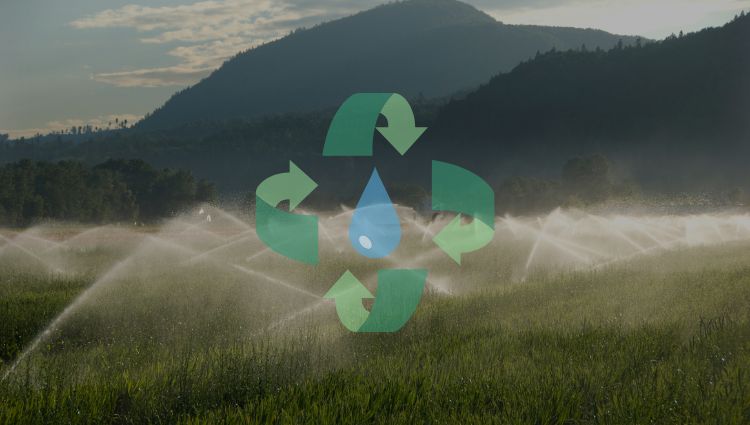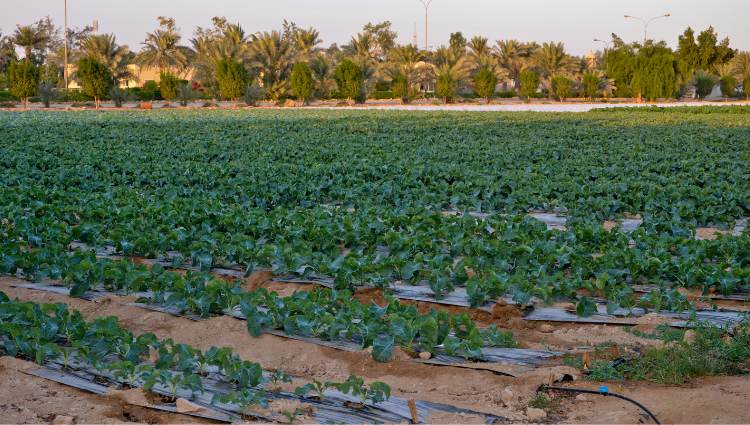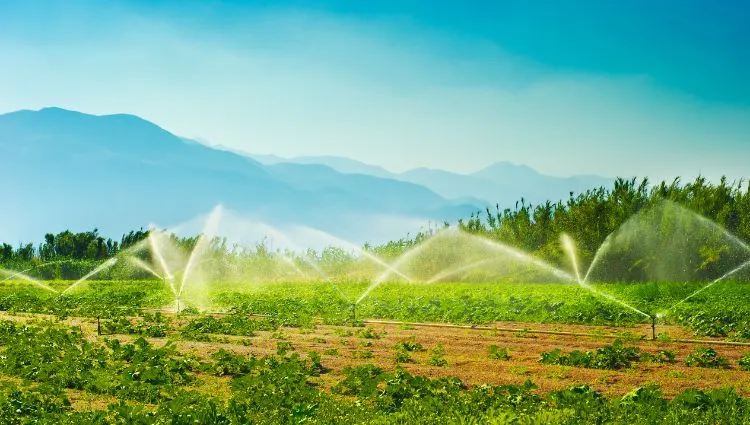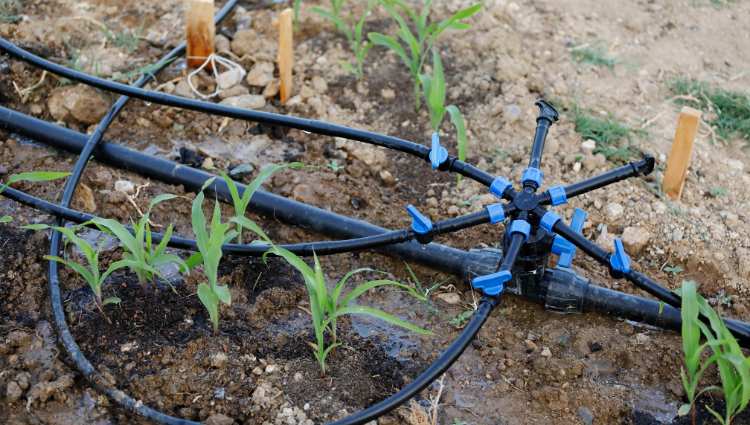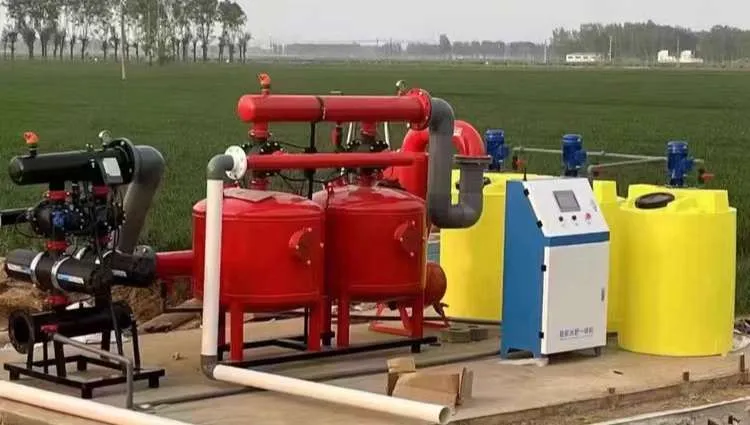সূচিপত্র
Irrigation is a form of technology and wisdom that humans have continuously refined and summarized through agricultural practice. It not only greatly improves the quality and efficiency of crop production, but also brings significant convenience to farmers in their work.
Irrigation technology has made the traditional way of relying on the weather for food a thing of the past, giving farmers greater initiative to control the growth results and yield of their crops.
তবে, it must be acknowledged that many problems still arise during the irrigation process. We need to face these problems and actively work to solve them. This article will list some common issues and corresponding solutions for each component of an irrigation system.
পানির উৎস

The water source is extremely important—it determines whether the entire irrigation system can operate properly. Sometimes, problems with the water source can cause the irrigation system to function abnormally, run for only a short time, or frequently break down during operation.
Water sources can mainly be divided into surface water and groundwater. As for surface water, it usually contains a large amount of suspended solids and other impurities. If we want to use this type of water, we need to use chemical agents to filter out the impurities. Regarding groundwater, on the one hand, it contains rich minerals; on the other hand, it often has issues with pH levels. We need to adjust it based on its acidity or alkalinity before it can be used for irrigation.
In addition to surface water and groundwater, rainwater and seawater can also serve as water sources, but they must also be treated before being put into use.
No matter what type of water source it is, the most essential issue to address is the impurities. The raw water source must be filtered. There are usually several ways to deal with impurities. উদাহরণস্বরূপ, we can build a water storage pond, allowing the impurities in the water to settle naturally. If this method isn’t thorough enough, we’ll need to use various types of filtration equipment to handle the impurities. For instance, a sand filter can remove silt, শৈবাল, and larger organic impurities. A hydrocyclone sand separator can also filter out large particles. Filters like the disc filter and screen filter can remove even smaller impurities and further improve filtration accuracy.
Sometimes, to maximize the filtration effect of a water source, different types of filters can be combined to form a filtration system, which significantly enhances the overall filtering performance.
Water Pump

Irrigation systems are used in a wide range of settings, such as mountainous areas, terraced fields, plains, এবং আরো. We need to choose the right water pump based on the specific application scenario, taking both head and flow rate into consideration.
How to choose a suitable water pump is actually a very common and important question. To answer this, the first thing we need to consider is the type of irrigation area and water source. If your irrigation area is located in mountainous or terraced regions with large elevation differences, we recommend using a centrifugal pump, as it offers higher head. If your irrigation area is on flat land like a plain, then an axial-flow pump is more suitable. If the area is more complex and includes both plains and hilly or mountainous terrain, then you should go for a mixed-flow pump, because it combines the characteristics of both centrifugal and axial-flow pumps.
The pumps mentioned above are suitable for large-scale irrigation systems. But what if you’re irrigating a small orchard? In that case, a submersible pump is more than enough!
Another important question about water pumps is how to choose the right flow rate. Sometimes, based on mathematical calculations, we might determine that a water pump with a flow rate of 1000 L/h is needed. তবে, in practice, using a pump with exactly that flow rate is often not sufficient. This is because, during water flow, friction occurs, which affects the actual flow. সুতরাং, we need to purchase a pump with a higher flow rate than the calculated theoretical value to meet the actual demand.
Filter

As mentioned earlier, filters play an important role in addressing the problem of impurities in the water source. তবে, there are many different types of filters. নিচে, we will introduce the similarities and differences between various filters to help you solve the problem of how to choose the right one.
In irrigation projects, filters determine whether the system can operate stably and for a long time. We need to arrange different filtration equipment according to different scenarios.
In the primary filtration stage, we usually recommend using a hydrocyclone filter and a sand filter, as they are mainly used to filter out larger impurities. The hydrocyclone filter uses centrifugal force to remove large sand and gravel particles, but it is not very effective for finer impurities, which may lead to system blockages. এই ক্ষেত্রে, we can use the sand filter to further remove smaller impurities.
Next comes the secondary filtration stage. In this stage, the disc filter এবং screen filter are mainly used. Their differences can be understood by referring to the comparison table below:
| Screen Filter | Disc Filter | |
| Structure Principle | Multi-layer mesh interception, flow diverted through mesh holes | Thin discs stacked with cross filtration, compressed by spring |
| Filtration Precision | Coarse filtration (>50 μm) | Fine filtration (20–200 μm) |
| Flow Efficiency | Low throughput, suitable for small to medium flow rates | High throughput, suitable for high-flow systems |
| Maintenance Cost | Requires regular flushing/replacement, high cost | Backflushing is automated, low cost |
| Application Scenario | Irrigation with good water quality and fewer impurities | Drip irrigation with turbid water and more impurities |
সাধারনত, after passing through the primary and secondary filtration stages, the impurities in the water are effectively removed, thereby preventing system blockages.
Pressure Regulator

সেচ ব্যবস্থায়, pressure issues have always been important and common. Different irrigation scenarios and pipelines have different pressure requirements. When installing an irrigation system, we must consider whether the pipes, as well as the drip and sprinkler components installed at the end of the pipeline, can withstand the pressure.
In flat areas, pressure doesn’t vary much, so we can simply purchase related products according to the recommended pressure parameters. But in areas with varying elevations, the pressure will change, and we can’t treat all situations the same. If the pipe cannot withstand the pressure at a certain location, a pressure regulator needs to be installed there to prevent the pipe from cracking due to excessive pressure, which would affect the operation of the entire irrigation system.
Common pressure regulators include pressure-reducing valves, angle seat valves, এবং তাই. Typically, a pressure-reducing valve can be installed on the main pipeline. At the end of the pipeline, relatively simple angle seat valves are often used to prevent sprinklers, ড্রিপার, micro-sprayers, and similar products from being damaged by excessive pressure.
Main Pipeline

For the main pipeline, the most common problems are blockage and rupture.
Regarding blockage, this issue is most likely related to problems with the filter. When a large amount of impurities enters the pipeline, it can cause clogging. If a blockage occurs, we can first use the pressure gauge on the pipeline to determine which part is blocked. Then, release the water and clean both sides of the affected section. অবশেষে, use a repair clamp (Haff coupling) or other fittings to repair the pipeline. After the repair, check the filter for issues — clean the filter mesh or replace the filter directly.
As for rupture, this problem may be caused by environmental factors or human error. অবশ্যই, it could also be related to the service life of the pipeline.
Environmental factors refer to situations where extreme weather or issues with water pH may cause the pipe to rupture. In such cases, we need to consider whether the pipe is suitable for the soil conditions and climate of the area. A temporary solution is to quickly repair it with a pipe repair clamp or similar fitting. Then consider whether to replace it with a more suitable pipeline product during future use.
Human factors refer to damage caused to the pipeline during construction. The remedy is the same — the damaged part can be repaired or replaced. তবে, supervisors should strengthen management to avoid such human-caused problems from happening again.
Regarding the pipeline’s service life, we must understand that plastic products will inevitably experience wear and tear over long periods of use. Some pipelines are laid on the ground, while others are shallowly buried underground, and the degree of wear differs in each case. Workers can evaluate whether to replace the pipeline based on the level of wear and the associated costs.
Branch Pipeline

For branch pipelines, the most common problems are insufficient pressure and the choice of irrigation method.
When it comes to pressure issues, it mainly involves the pipe size. The size of the branch pipe is usually smaller than the main pipeline so that the end of the pipeline can reach a proper pressure and flow rate. অবশ্যই, the smaller the pipe is doesn’t always mean the better — it depends on flow velocity, pressure loss, maintenance cost, and the pressure of the entire system. সংক্ষেপে, choosing the right pipe size will greatly improve both the efficiency and cost-effectiveness of irrigation.
As for irrigation methods, different methods can have different effects on crop growth. Common irrigation methods include drip irrigation, micro-sprinkling, inverted micro-sprinkling, স্প্রিংকলার সেচ, rain gun irrigation, and flood irrigation.
So how do we choose the right irrigation method? It mainly depends on the crop, soil type, and economic cost.
For crops, the key is what you’re growing. উদাহরণস্বরূপ, sprinkler irrigation is often used for fruit trees, while rice needs flood irrigation. Blueberries, on the other hand, require more delicate drip irrigation.
As for soil type, it’s mainly divided into two broad categories: clay soil and sandy soil. Clay soil naturally has higher moisture and better water retention, so fewer irrigation sessions per day can be enough to achieve proper infiltration. Sandy soil, because of its low water retention and faster water loss, needs more frequent drip irrigation to ensure that the roots get enough water and nutrients.
As for economic cost, that’s also a very important factor. Drip and micro-sprinkler systems are relatively more expensive than other irrigation methods, but they produce better plant growth and use water more efficiently. If there’s a solid economic foundation, it’s still recommended to go for micro-irrigation or drip irrigation. তবে, for those with limited budgets, sprinklers and rain guns are also good options.
ড্রিপারস

When it comes to drippers, the main issues we need to deal with are clogging, flow rate selection, and pressure problems.
Regarding clogging, the main reason is still the presence of impurities in the pipeline, which causes the drippers to become blocked. There are two solutions. One is the filter: replace it with a filter that has higher filtration precision. The other is the water source: if the water source itself is murky, we can consider adding a sedimentation tank to reduce the pressure on the filter. অবশ্যই, we should also take the pH of the water into account, and add certain chemicals to adjust the water quality.
Besides these two solutions, we should also pay attention to pipeline maintenance—regularly flushing the pipes and backwashing the filters—to keep all equipment in good working condition.
As for the flow rate of the drippers, we need to understand the water requirements at different growth stages of the crops to choose a dripper with the right flow rate.
Regarding pressure issues, we need to consider whether the drip irrigation system is in flat terrain or in areas with varied elevations. In flat areas, we can choose adjustable-flow drippers, or drippers with pressure-compensating functions. But in mountainous, hilly, or sloped areas, we must use pressure-compensating drippers to ensure more even crop growth.
এছাড়াও, too high working pressure can damage the drippers, while too low pressure might result in no water coming out at all. Whether it’s adjustable-flow drippers or pressure-compensating drippers, both can be affected by overly high or low working pressure. We need to make our choices based on the actual situation.
Impact Sprinkler

The issues it faces are quite similar to those of the dripper, but because its structure is more complex, it may come with even more potential problems.
For clogging, the solution is the same as with the dripper: the impurities in the pipeline must be addressed.
When it comes to flow rate, we need to consider the sprinkler’s flow rate, spray radius, কাজের চাপ, and connection size. It’s important to choose a sprinkler with the right parameters. উদাহরণস্বরূপ, an impact sprinkler usually has a main nozzle and a sub-nozzle, and both of them come with different flow rate options. As for the spray radius, it should be selected based on the pipe system’s installation spacing. অবশ্যই, the installation height also needs to be determined according to the crop height.
The sprinkler’s working pressure should not be too high or too low. তবে, the working pressure of sprinklers is different from that of drippers: within the operating pressure range, the sprinkler’s flow rate will change along with the pressure. If the pressure is too low, the impact sprinkler won’t function properly. The solution could be to change the pipe size, but the easiest fix is to switch to a water pump with a higher flow rate. If the pressure is too high, the sprinkler will rotate too fast. At first, this may not seem like a big issue, but over time it can damage the sprinkler—leading to economic loss and affecting the irrigation of the crops.
Regarding the connection size of the sprinkler, it should match the pipe size. Although some size differences can be adjusted using adapters or reducing fittings, this increases the risk of product damage.
The last issue is the material of the impact sprinkler. সাধারণত, we choose polyoxymethylene (পম) as the main material for manufacturing impact sprinklers. Its hardness, প্রতিরোধের পরেন, and other features perfectly match the working conditions of impact sprinklers. তবে, some sprinkler manufacturers use polypropylene (পিপি) instead, just to compete on price. This may reduce the cost, but it also reduces the durability and stability of the product. Sometimes, we may encounter sprinklers that break down soon after being used, or become deformed under high temperatures—this could very well be caused by poor-quality raw materials.
Irrigation Fittings

For some fittings, the main issues are that size and material can greatly affect the quality of the product.
We often hear people say that the fittings they bought—like elbows—don’t match the pipes. Actually, this is a very common problem and a difficult one to solve. That’s because sometimes the product size doesn’t follow a unified standard. Some manufacturers even cut corners on size in order to reduce costs. তাই, if you’re a buyer, you must ask the supplier to measure the product’s dimensions with a vernier caliper before placing an order—by sending photos, videos, or samples—to make sure the products are a good fit.
Besides size, quality issues may also appear in irrigation fittings. উদাহরণস্বরূপ, the product may be brittle, not sturdy, or show whitening or spotting on the surface. These problems are actually caused by the material. Irrigation fittings—like mini valves or mini pipe fittings—are mostly made of polyoxymethylene (পম) or polypropylene (পিপি). তাদের মধ্যে, PP is the most commonly used material. If better quality is desired, POM will be used.
If you find the surface of the product turning white, it’s because too much calcium powder was added during production. This makes the product more brittle, heavier, and causes the whitening. Doing this reduces product performance and shortens its service life.
If there are white spots on the surface of the product, that means the manufacturer used recycled material in the process. Now let me teach you how to tell whether the product is made from new material or recycled material. Actually, it’s quite simple—we look at two things. প্রথম, check the smoothness of the surface. Products made from brand-new material won’t have bubbles and will have a smooth surface. Second, check the product’s weight. By comparing the weight with the normal standard, you can judge whether recycled material was used. You can even calculate the proportion of new/recycled material and calcium powder in the product.
Controller
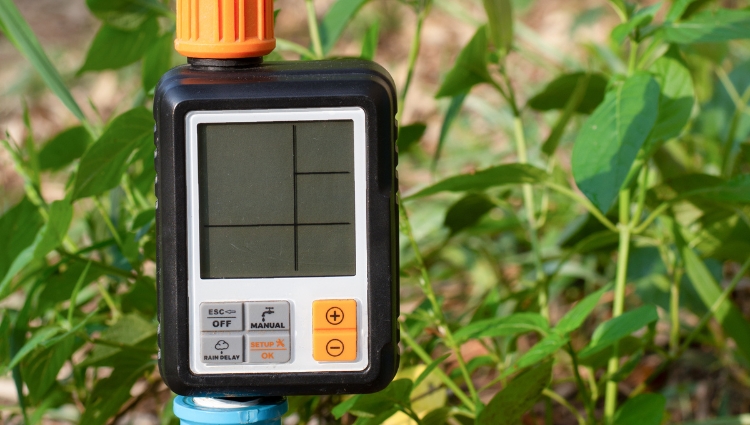
This type of product (such as timers) involves electronic components, so it is more complex than other products. The problems it may encounter mainly include failure to work properly and some other issues. We need to analyze them one by one. Let’s first take a look at why a controller might not be functioning correctly:
1. Power failure. This issue is related to the power connection cable, transformer, fuse, and the voltage of the working environment. We can check each power component one by one to find the source of the problem.
2. Damage to the electronic chip. The electronic chip in a controller is like a human brain—once it’s damaged, the entire controller or even the whole irrigation system may become paralyzed. For this issue, we can try sending program commands to see whether the controller can still receive instructions and operate normally.
3. If the electronic chip is fine, we then need to consider whether the controller’s gateway, sensors, and receivers are working properly. For the gateway, check whether it can connect with the mobile app, and also check if there are issues like SIM card service suspension due to unpaid fees. For sensors, the most common problem is clogging—pay close attention to whether there’s any blockage in the command pipe. The same goes for receivers.
Besides the above issues, controllers—like timers—can also have problems where the set watering time and watering amount don’t match the actual situation. This is most likely caused by a program error. In such cases, we can double-check the timer settings, adjust the parameters, or directly restore factory settings and reconfigure everything. সাধারণত, this solves the program issue.
এছাড়াও, for some control valves—like solenoid valves—leakage or failure to work may sometimes occur. This is most likely due to debris entering the valve or aging of the sealing ring. We need to disassemble the valve for cleaning, check whether the sealing ring is worn out, and remember to perform regular maintenance on solenoid valves in the future.
Conclusion
ঠিক আছে, considering the length, this article is basically coming to an end. There are still many issues in irrigation systems that I haven’t listed here. If I get the chance in the future, I’ll continue writing more articles to cover them. অবশ্যই, if readers have questions they’d like to ask, feel free to reach out to us anytime.
সবশেষে, I’d like to introduce our company. Rainfaun চীনে সদর দপ্তর একটি সেচ পণ্য প্রস্তুতকারক. We produce and export products for drip and sprinkler irrigation, such as irrigation sprinklers, বৃষ্টি বন্দুক, nozzles, ফিল্টার, driplines, ড্রিপ টেপ, lay flat hoses, ড্রিপার, ভালভ, PVC pipes and fittings, পিপি জিনিসপত্র, controllers/timers, এবং আরো. You can find more information Rainfaun সম্পর্কে এবং আমাদের পণ্য এই ওয়েবসাইটে.
If you’re interested in working with us, আপনি পারেন এখানে ক্লিক করুন ফর্ম পূরণ করতে.
লেখক: Allen
সম্পাদক: মাইকেল
বিষয়বস্তু পর্যালোচনাকারী: মাইকেল


